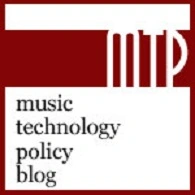The United States of America, acting under the direction of the Attorney General of the United States, and the States of Arkansas, Florida, Georgia, Indiana, Kentucky, Louisiana, Mississippi, Missouri, Montana, South Carolina, and Texas, acting through their respective Attorneys General, bring this action under Section 2 of the Sherman Act, 15 U.S.C. § 2, to restrain Google LLC (Google) from unlawfully maintaining monopolies in the markets for general search services, search advertising, and general search text advertising in the United States through anticompetitive and exclusionary practices, and to remedy the effects of this conduct…..
Over time, Google has chosen to include important features and functionality in Google’s own ecosystem of proprietary apps and APIs, rather than the open-source Android code. Google refers to this proprietary layer as “Google Mobile Services” (GMS). GMS includes many popular apps, such as Google’s search app, Chrome, YouTube, and Google Maps. GMS also includes Google Play, Google’s app store….
If a manufacturer wants even one of Google’s key apps and APIs, the device must be preloaded with a bundle of other Google apps selected by Google. The six “core” apps are Google Play, Chrome, Google’s search app, Gmail, Maps, and YouTube. Manufacturers must preinstall the core apps in a manner that prevents the consumer from deleting them, regardless of whether the consumer wants them. These preinstallation agreements cover almost all Android devices sold in the United States.
United States of America, Arkansas, Florida, Georgia, Indiana, Kentucky, Louisiana, Mississippi, Missouri, South Carolina and Texas v. Google LLC. (U.S.D.C. D.C. Cir. No. 1:20-cv-03010 Oct. 20, 2020).
VIII. REQUEST FOR RELIEF
194. To remedy these illegal acts, Plaintiffs request that the Court:
a. Adjudge and decree that Google acted unlawfully to maintain general search services, search advertising, and general search text advertising monopolies in violation of Section 2 of the Sherman Act, 15 U.S.C. § 2;
b. Enter structural relief as needed to cure any anticompetitive harm;
c. Enjoin Google from continuing to engage in the anticompetitive practicesdescribed herein and from engaging in any other practices with the samepurpose and effect as the challenged practices;
d. Enter any other preliminary or permanent relief necessary and appropriate to restore competitive conditions in the markets affected by Google’s unlawful conduct;
e. Enter any additional relief the Court finds just and proper; and
f. Award each Plaintiff an amount equal to its costs incurred in bringing this action on behalf of its citizens.
I have for many years pounded the table about the real value of non-display and ancillary uses of YouTube. There should be no doubt of the value that YouTube plays as one of the six core apps that Google often demands be pre-loaded onto smartphones. And artists bring tremendous uncompensated value to YouTube.
MTP readers will recall that the last time Google found itself in antitrust hot water (well, luke warm water) was when the Federal Trade Commission hired attorney Beth Wilkinson to oversee the Commission’s 2012 investigation into Google because there just weren’t enough good antitrust lawyers at the FTC. The FTC decided not to prosecute Google. So far, the Department of Justice hasn’t demonstrated a need of Ms. Wilkinson’s services.
US v. Google has the potential to be as significant as the Microsoft case and follows a similar argument.
